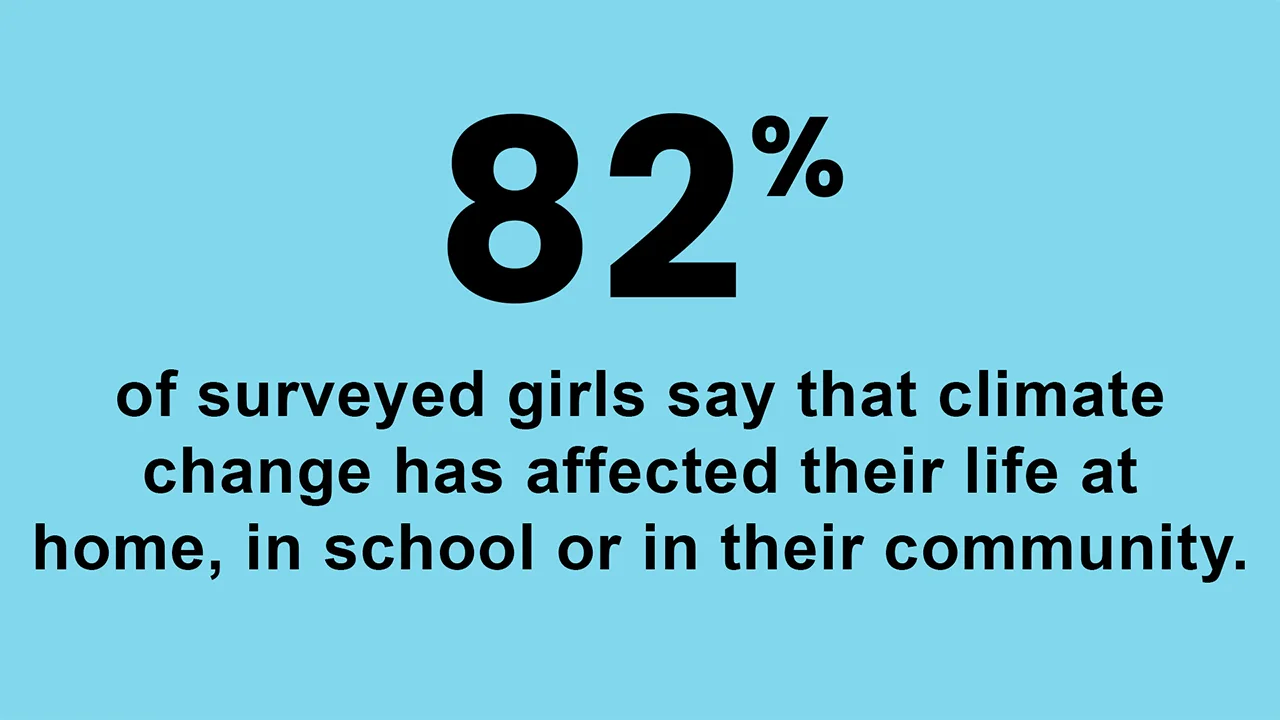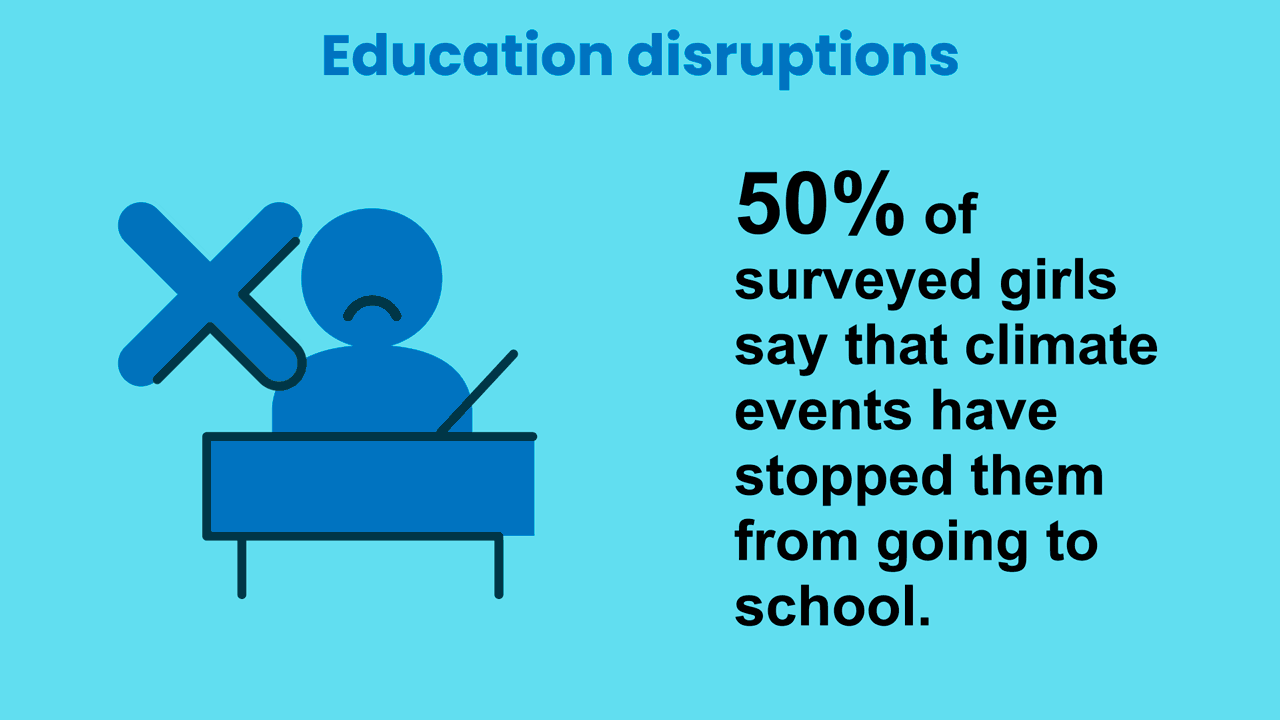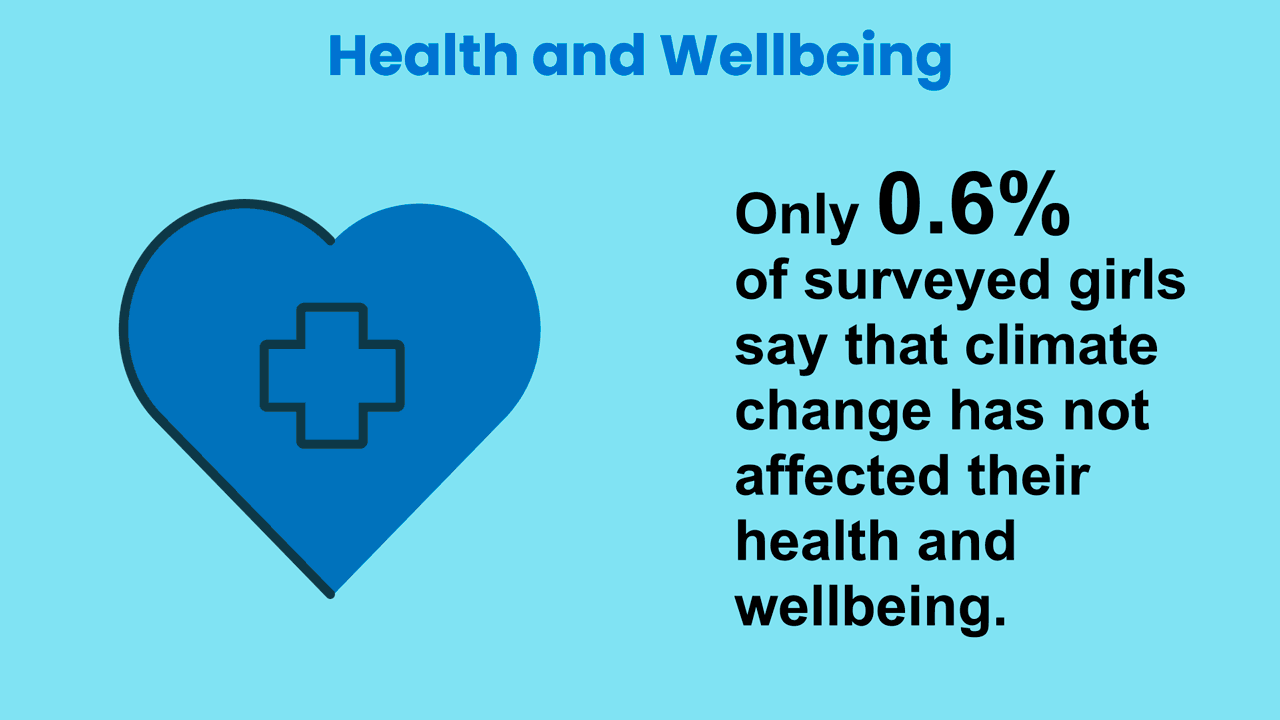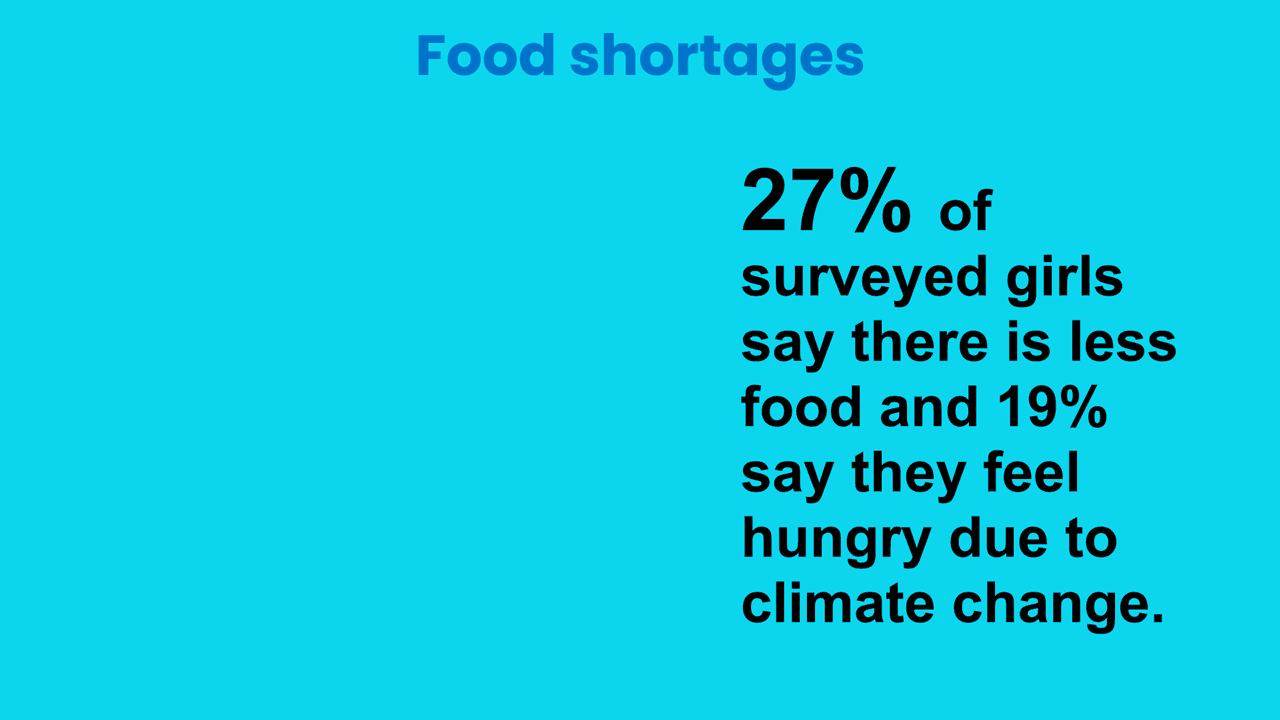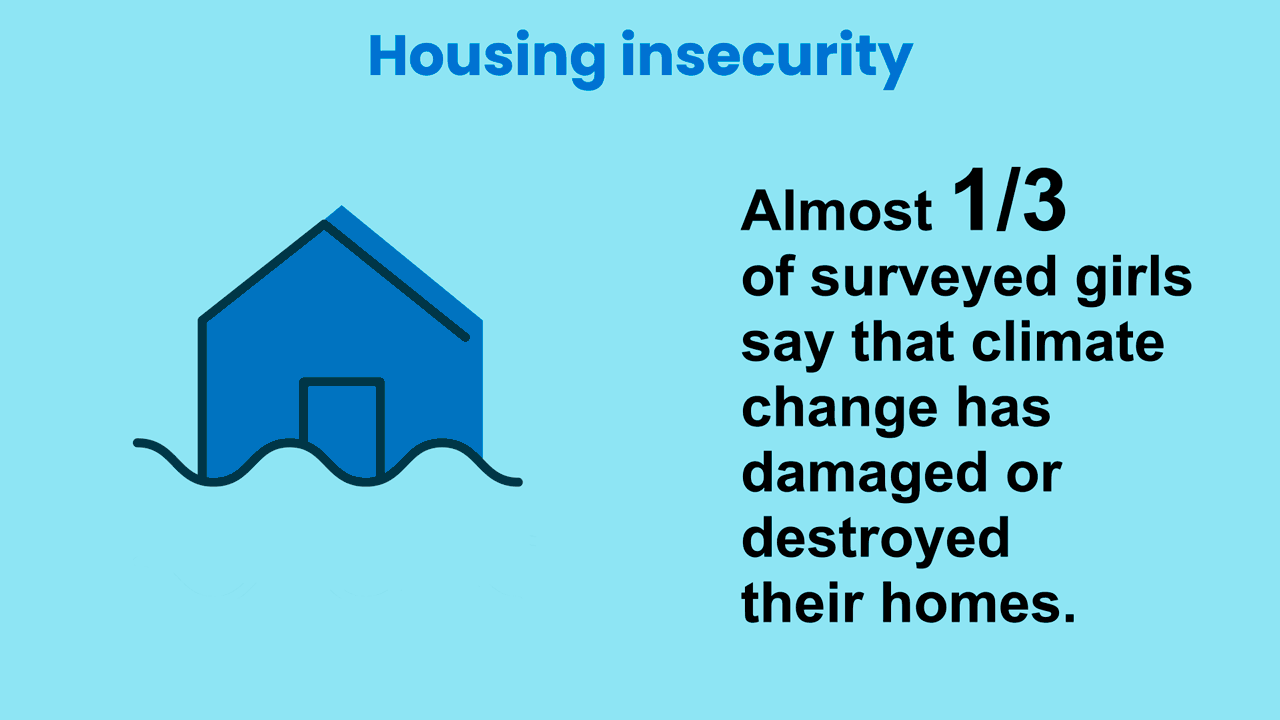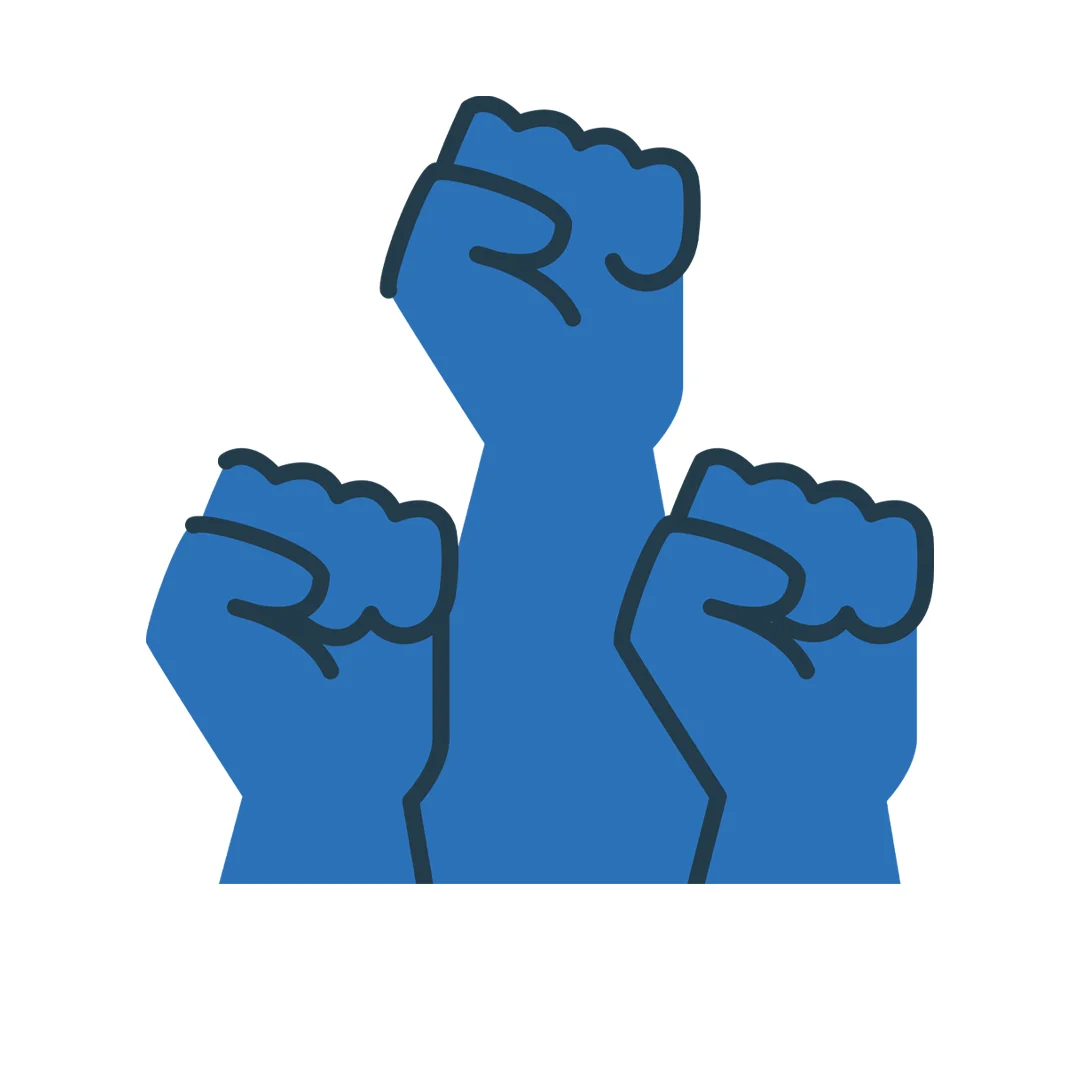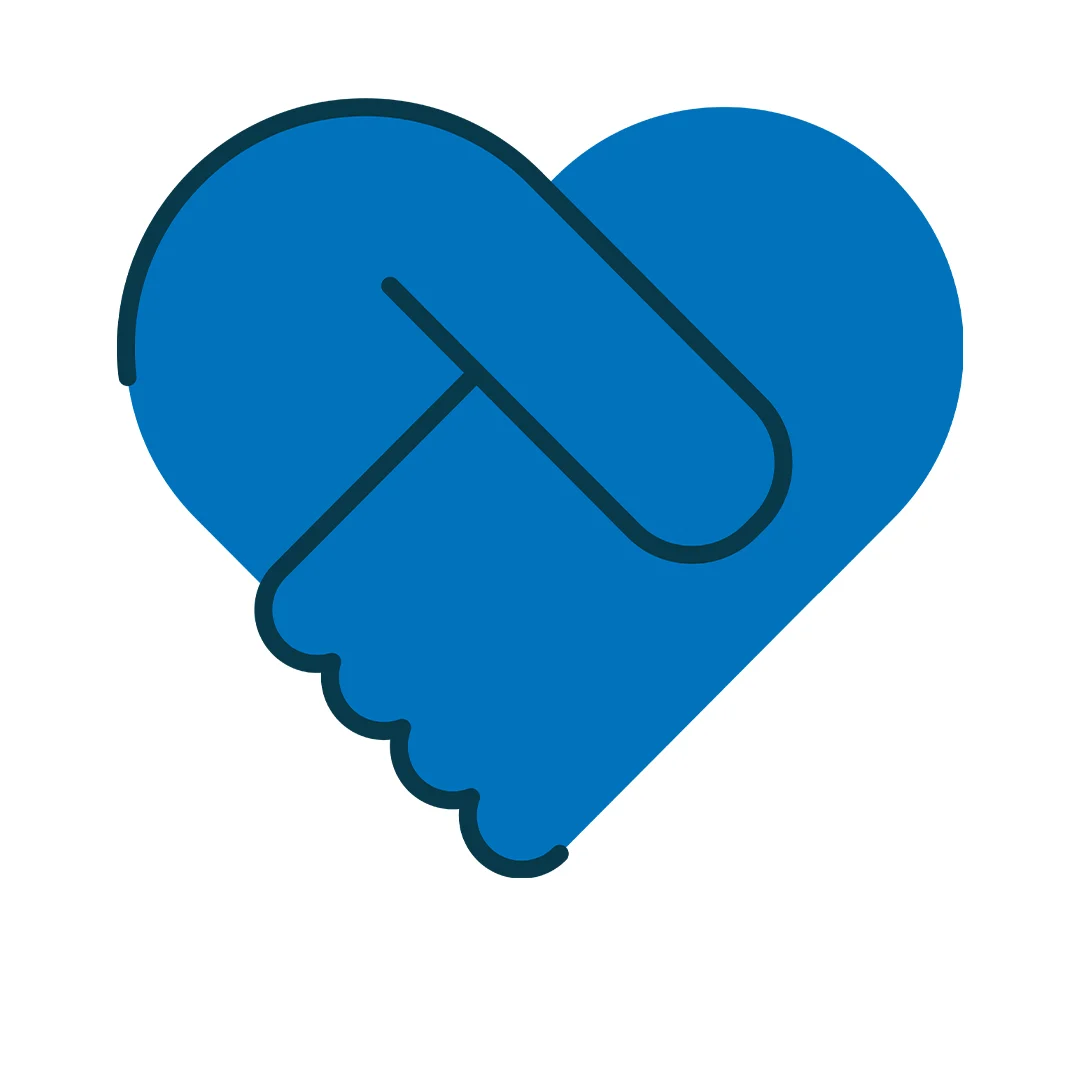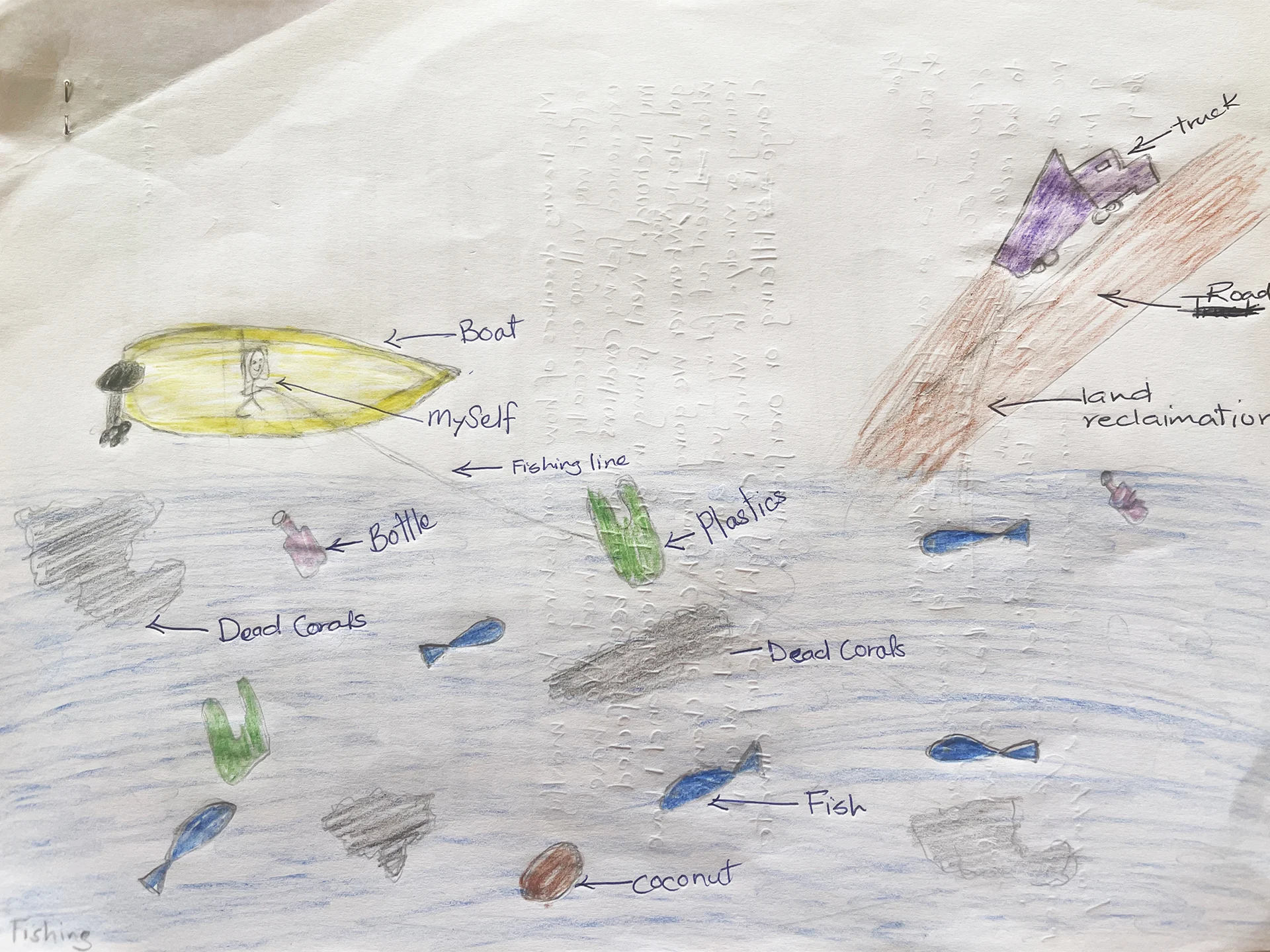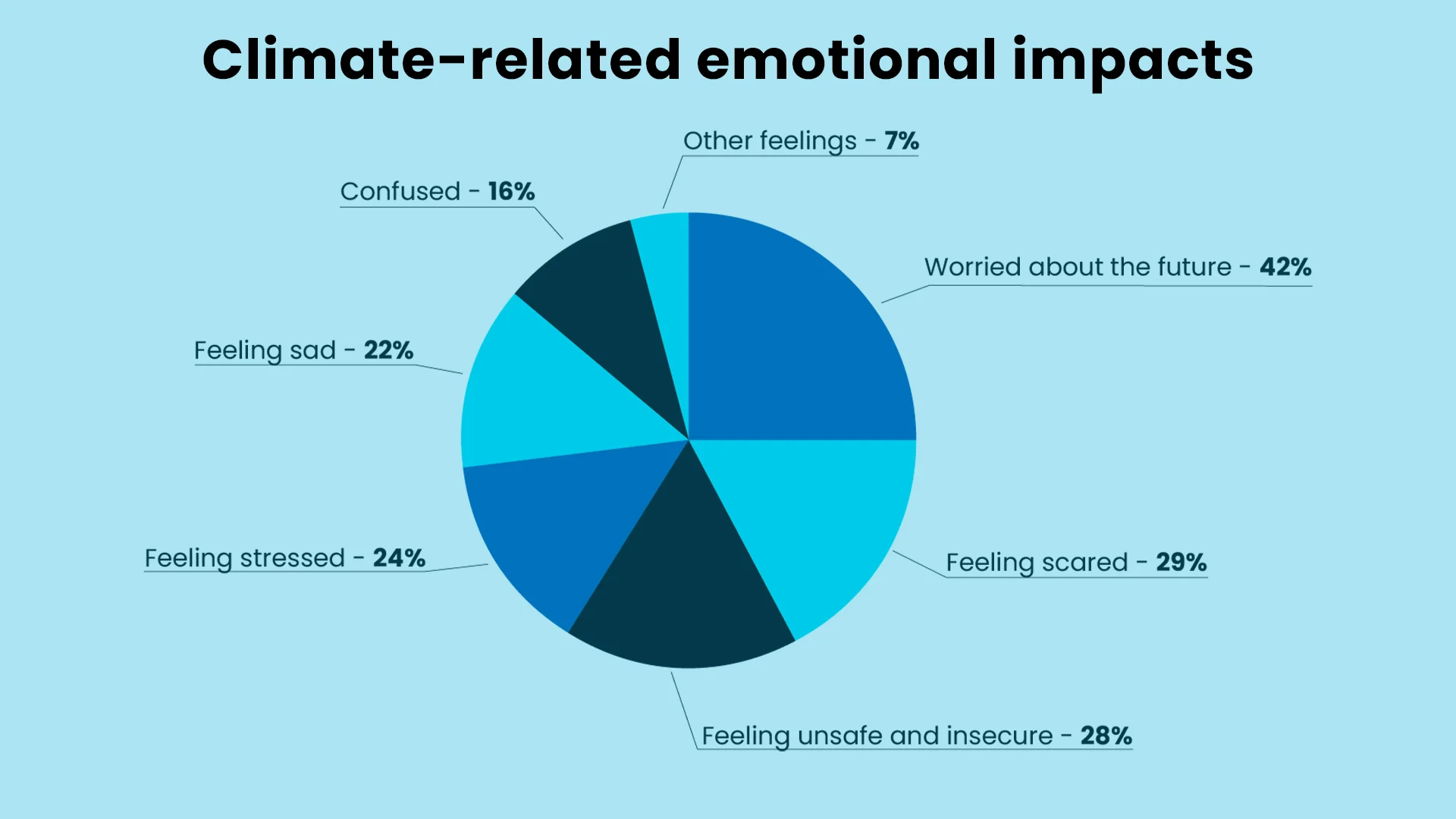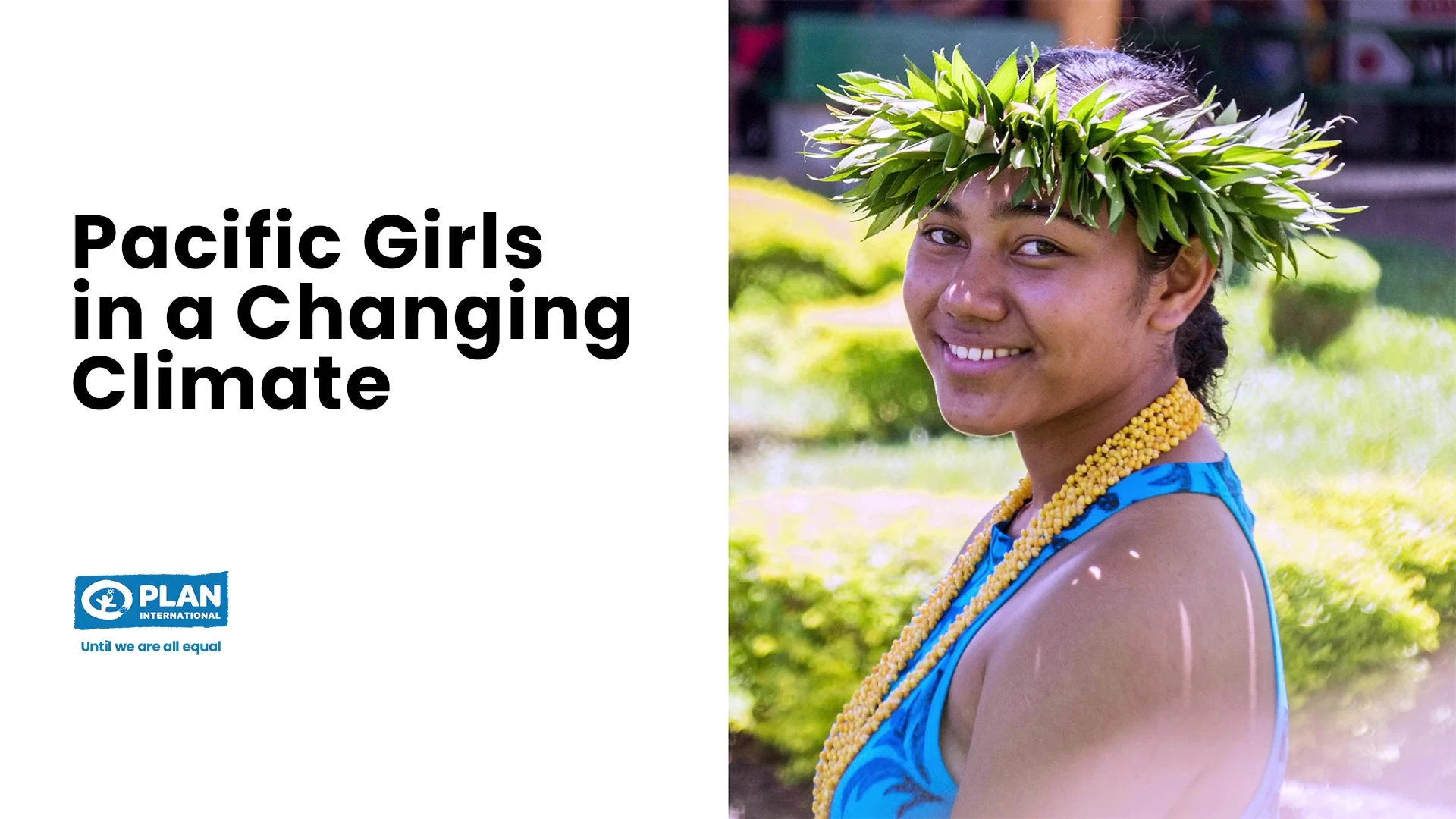
Climate change is a significant threat to the island nation communities of the Pacific ocean, with the region experiencing significant loss and damage to it's land, sea and waters.
Pacific Girls in a Changing Climate documents the lived experiences of climate change for girls, adolescents and young women aged 10 to 18 in the Pacific and their recommendations for action to protect and promote their human rights.
The girls that participated told us that climate change is reshaping their lives. It is exacerbating existing inequalities as well as creating new barriers for them as they enter adulthood.
Yet girls in the Pacific are not passive actors. They are at the forefront of activism and influencing governments to take climate action. The report captures how Pacific girl-led change can be supported, resourced and strengthened by all actors.
Pacific girls have clear strategies and recommendations for changes in law, policy and development practice that will dismantle barriers and create pathways into a future in which they can thrive.
We surveyed 319 girls across the Pacific region including from the Federated States of Micronesia, Fiji, Kiribati, Solomon Islands, Tonga and Tuvalu.
This is what they told us.
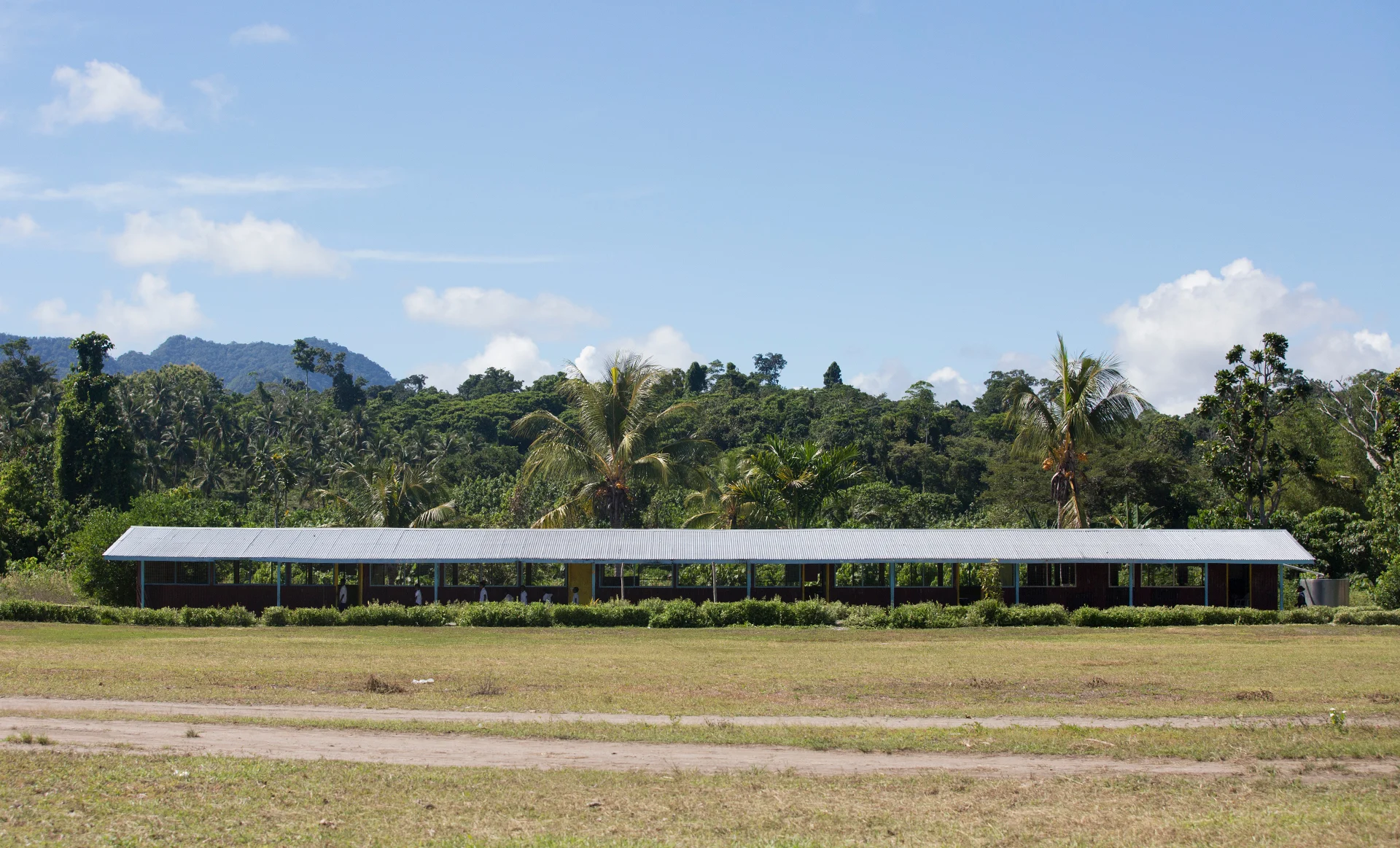
Girls are not passive actors,they are leaders and activists
Pacific girls are climate justice activists
34% of surveyed girls participate in climate justice activism.
Pacific girls want to build a stronger girl-led movement
72% of surveyed girls want to be connected to climate justice groups.
Pacific girls want to shape a just future
57% of surveyed girls want their voices to shape climate policy and action.
Pacific girls want tools to build a better future
66% of surveyed girls want education on how to adapt to climate change.

Impacts of climate change on Pacific girls
Environmental
Pacific girls experience a range of environmental impacts from climate change including increased heat, water scarcity, sea level rises and extreme weather events. Overall, 73% of surveyed girls identified increasing temperatures (“getting hotter”) as the most common impact.
Access to water, food and housing
Water scarcity
Many Pacific communities rely heavily on groundwater as the only reliable source of fresh water, however changes in rainfall patterns and sea-level rises as well as pollution in urban regions is placing water resources at risk.
"I would like to have water tanks to reduce work for our mothers in fetching clean water and our community water source to be treated to reduce skin diseases and sickness. Request if the Ministry of Health and Infrastructure could pay a visit to my community to see the issues faced and provide awareness. If my community are supplied with good water tanks and water sources are treated, we will have clean and safe water to use and good health."
Filo, a 14-year-old girl with a disability living in a rural village in Fiji.
Food insecurity
Cyclones, storms, coastal erosion and flooding affects freshwater availability, contributes to salination of lands and reduces fertile land for farming and access to fresh fruits and vegetables. Additionally, Pacific communities are heavily dependent on oceans for food and income, but acidification, ocean warming, overfishing, and pollution is poisoning marine food sources.
"My drawing describes how poor fishing is happening in my villages which affects my livelihood. Before when I go out fishing, I usually collect a lot of seaweeds, sea grapes, fish etc. but now it has [become] extinct due to land reclamation and dumping of rubbish in the sea. We can reduce by placing taboos [restrictions on fishing] in reserved areas for a period of time to let the marine resources grow again."
Ruci, a 15-year-old Indigenous girl living in a rural area in Fiji.
Photograph of Ruci's drawing.
Photograph of Ruci's drawing.
Housing insecurity
Disasters such as cyclones have damaged critical infrastructure, including housing. 27% of girls said that climate events had damaged or destroyed their homes, displacing their families.
Disaster response: accessibility and inclusion
Girls, especially those with disabilities, face unique challenges around access and inclusion in disaster response, including poor access to disaster information and lack of disability inclusive evacuation facilities.
"Some of my friends are visually impaired and have hearing impairments and miss out accessing information about cyclone. When we have television news, there are no interpreters so it's hard to know what’s going on… There is still not enough support from government for our group especially for my other friends and colleagues who have visual and hearing impairment. Lack of disability friendly facilities at evacuation centres and even in our everyday life."
Participant in co-design workshops.
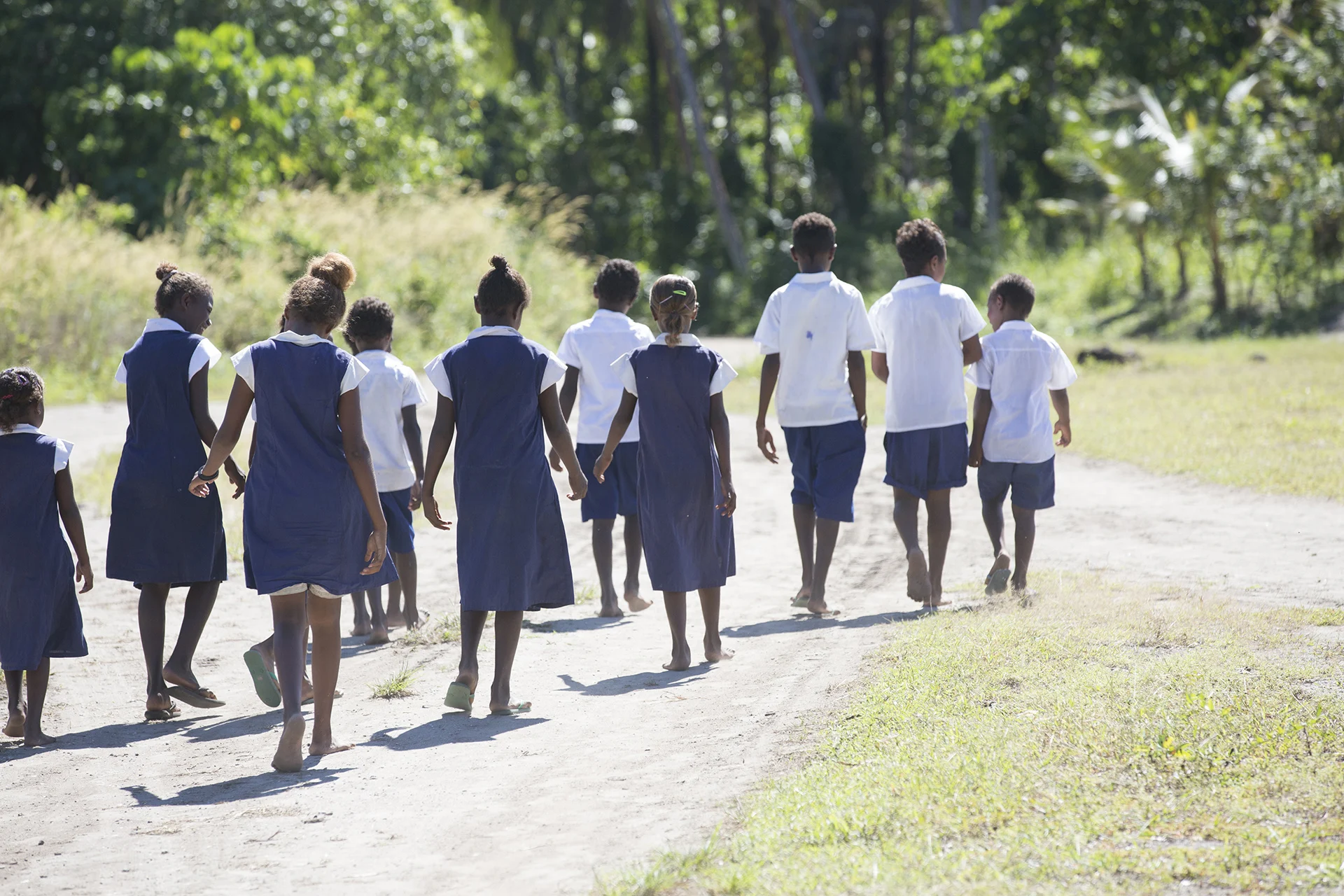
Girls’ health and wellbeing
Physical health
Close to half of surveyed girls (48%) reported the most common impact of climate change on their health is feeling very hot, thirsty or tired. Girls also reported skin and stomach problems due to a lack of access to clean water for cooking and bathing, poor sanitation, overcrowding, dietary deficiencies, dusty air, and pollution. Girls have experienced diarrhoea and disease due to contaminated water, and struggle to manage their hygiene and menstruation due to climate change impacts on freshwater supply.
Mental health and well-being
In the survey, girls shared that as a result of the very real impacts of climate change on their lives, they experience feelings of worry, fear, being unsafe and insecure, stressed, sad and confused.
"Hot temperatures in weather causes raises and boils on the head. Frequent changes in weather patterns causes sicknesses like short of breath, headaches. During hot sunny days it causes headaches.”
An Indigenous girl, aged 10, living in an urban area in Fiji.
"There's a lot of information about the effect of climate change but the most worrying of this is about the future. We (next generation) don't know what's going to happen to our home island.”
Indigenous girl, aged 18, living in a rural area in Kiribati.
Girls’ education, play and livelihoods
Access to schools and learning
33% of surveyed girls said their schools have been damaged or destroyed due to disasters.
Girls also shared that they cannot access their school due to rain, floods, heat and droughts. A lack of roads, bridges, transport, streetlights, footpaths and other services such as internet and phone connectivity are barriers, particularly for girls in regional and remote areas.
"My issue is, we don't have any bridge to go to school, town, etc. I had to cross the river every day of my life to reach school or access services. When water level rises my mom had to carry me across to go to school…."
Lusiana, a 10-year-old Indigenous girl living in a rural area in Fiji.
Sport, play and household labour
Girls explained that disasters destroy or flood sporting areas and schools, while heat distress, lack of access to fresh water and poor health affects girls’ ability to participate in recreation activities.
Additionally, girls shared that they are undertaking more household labour due to climate change with 19% of surveyed girls saying they work longer on household tasks and 11% travel further to collect food, firewood and water, or to go to school.
Family livelihoods
22% of surveyed girls said that climate change has caused loss of money or work for their parents. This can have flow on consequences for girls access to education.
Community and culture
Girls in the Pacific identified a range of community and cultural impacts of climate change. This includes the impacts of relocating communities from coastal to non-coastal regions, as well as damage to religious and community buildings.

Poem from an 18-year-old Indigenous girl living in rural Fiji.
Pacific girls’ calls for action on climate change
Overall key message:
Governments and donors must centre Pacific girls and their diverse lived experiences in climate policies and programs.
Action 1: Governments can prevent climate change
- Pacific governments must implement strict rules to stop deforestation, plant more trees and mangroves, and reduce water usage. They must stop sedimentation in the ocean, stop removing sand from the beach, and build seawalls.
- All actors globally must reduce pollution from industrialisation and the use of fossil fuels and gas, reduce carbon pollution, improve waste management, and increase renewable energy through technology.
"Stop sending plastic to Kiribati. Reduce gas emissions. Stop fishing in our ocean. Stop oil spillage both on land and sea. Stop mining phosphate.”
Recommendation from a girl, aged 13, living in a rural Kiribati.
Action 2: Governments can help girls cope with climate change and build climate resilience
- Pacific governments and donors can strengthen climate change education for girls, from early years through to university levels, by providing climate change focused programs and workshops alongside integrating climate change into school curriculums.
- Pacific governments and donors can improve girls’ standard of living in the face of a changing climate by ensuring clean water, proper shelter, and improved waste management.
- Donors and Pacific governments can provide support for sustainable livelihoods, improve farming, and create jobs and opportunities to study and work overseas.
Action 3: Governments can create girl-responsive emergency responses and disaster risk resilience
- Pacific governments and donors can teach children how to prepare for disasters including drills in schools, by using social media and engaging with families.
- Pacific governments and donors can improve early warning systems and ensure accessible evacuation facilities.
- Donors can provide aid to Pacific communities during disasters, including food, clean water, clean clothes, medical support and sanitary aids such as care packs and menstruation packs.
"Prepare ourselves in advance before a disaster strikes. Having to run up the hill before a tsunami when we are alerted before it strikes.”
Recommendation from an Indigenous girl, aged 10, living in an urban area in Fiji.
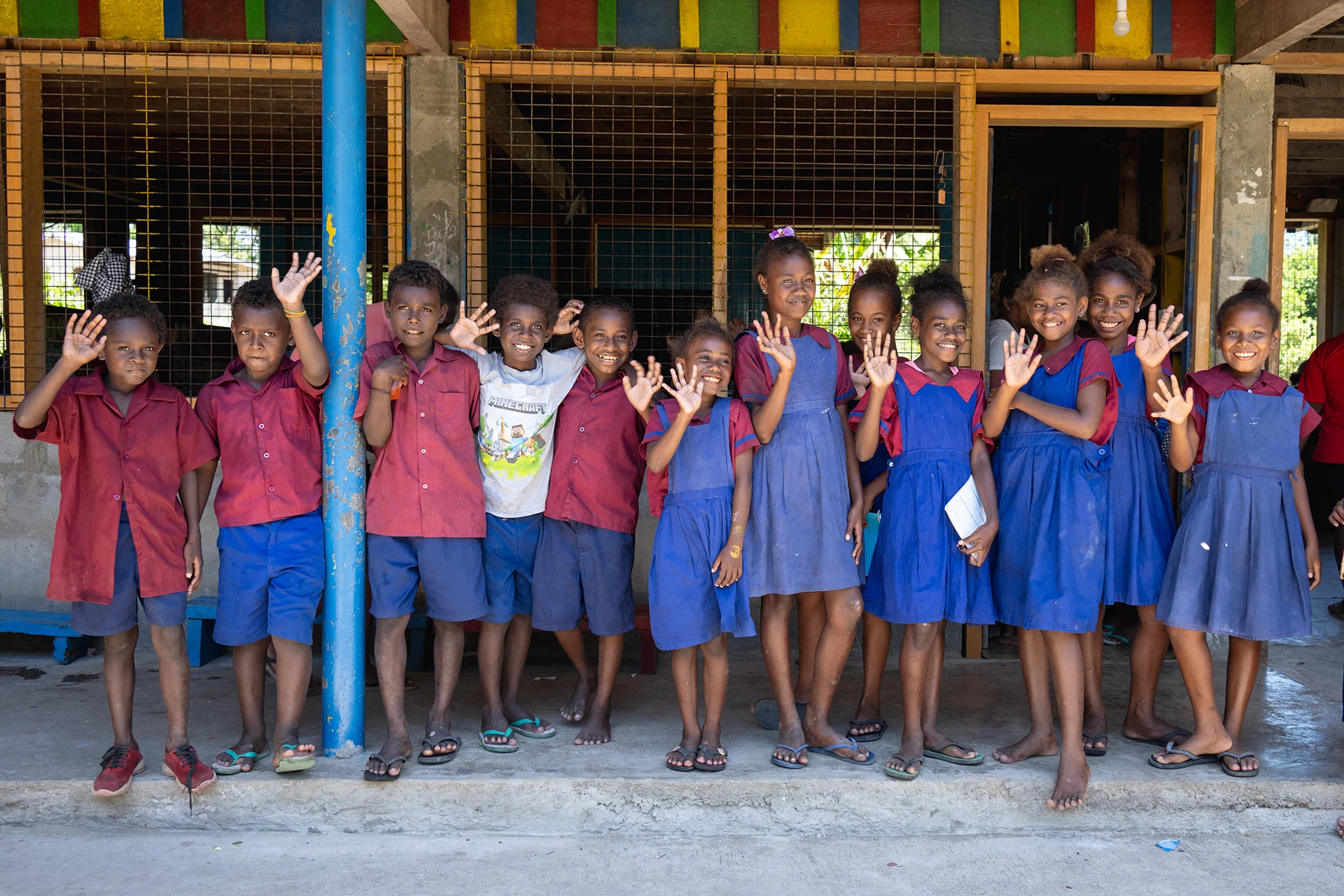
Pacific girls’ activism for climate justice
Pacific girls want to engage in climate justice activism
Currently one third of surveyed Pacific girls said that they take part in climate justice activism. Girls aged 16-19 are more likely to be involved in activism, and they are mostly engaged through school activities, community education, environmental projects, and campaigning. When asked, Pacific girls in the survey had a range of ideas for how girls could be part of the movement for climate justice.
- Letter writing to governments and talking to community leaders.
- Participating in youth parliaments.
- Striking and protesting.
- Campaigning on social media.
- Taking part in conservation projects such as planting days and community clean ups.
- Taking part in disaster preparation and climate change education.
"We as Pacific girls, we can get into groups and make a petition on papers, signboards and together we march into public areas."
Indigenous girl from a religious minority group, aged 14, living in an urban area in Fiji.
Pacific girls can be supported to be climate justice activists
Pacific girls identified three key enablers to help them take part in climate justice activism.
Education and awareness
Girls said that education and awareness about climate change and activism would help strengthen their engagement in activism; this could be education and awareness delivered through school, workshops, learning resources or the media.
"I will encourage my Kiribati young girls to be aware about climate change, so we can establish [a] body that only consists of Kiribati young girls, and then we can volunteer ourselves to do anything that deals with climate action or take on climate justice.”
Indigenous girl, aged 17, living in a rural area in Kiribati.
Opportunities to engage in collective action
Girls said they want opportunities to act collectively, identifying that forming a girls’ group (separate from boys) or joining an existing climate justice group or organisation would assist them.
Community support
Girls explained that community support would help them take part in climate justice activism. Some girls said that if their families and friends were involved, they would join in activism. Some girls also said that approval from elders and community leaders is important for them to take part in climate justice activism.
Barriers to girls engaging in climate justice activism
Being a girl in the Pacific
Girls shared that social and cultural norms regarding girls and their role in communities are key barriers to participating in climate justice activism.
Lack of support and resources
Girls said that some elders, parents and community members do not support action on climate change.
Lack of knowledge and opportunities
Project partners explained that the dissemination of climate change information and education is a challenge with climate information held by leaders and government agencies, while grassroots communities have limited access to simple and factual climate information.
"Some of the barriers in engaging in climate justice activism is geographical location, since I live in a rural area, which is more than 150km away from town. Network is an issue and I live in a very conservative community, my voice as a young person living with disability is not heard and valued."
Filo, a 14-year-old girl with a disability living in a rural area in Fiji.
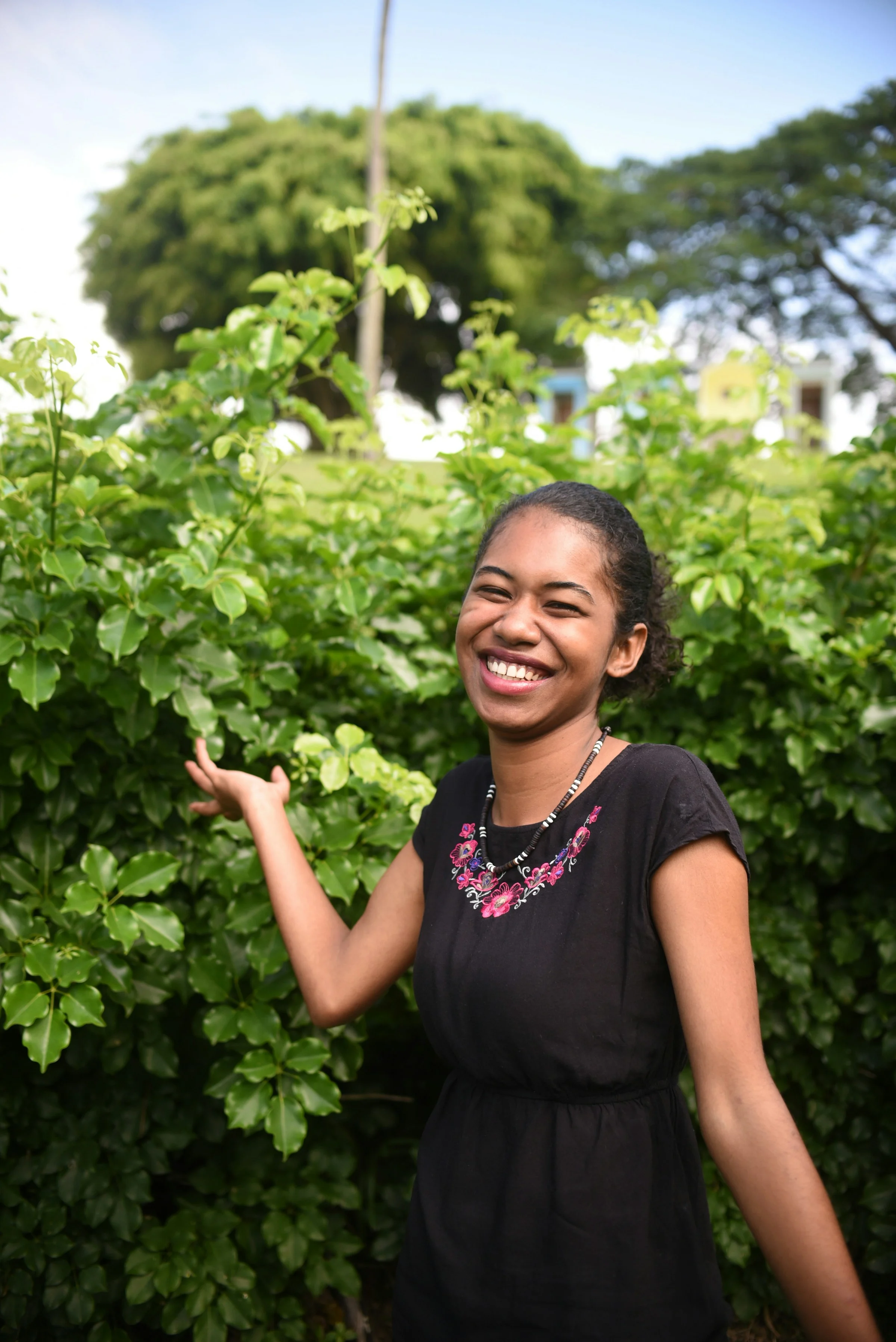
Recommendations:
Pacific girls’ strategies for change
The Pacific girls who worked on this report as co-researchers have developed recommendations for all actors to uphold the human rights and active participation of girls in a changing climate.
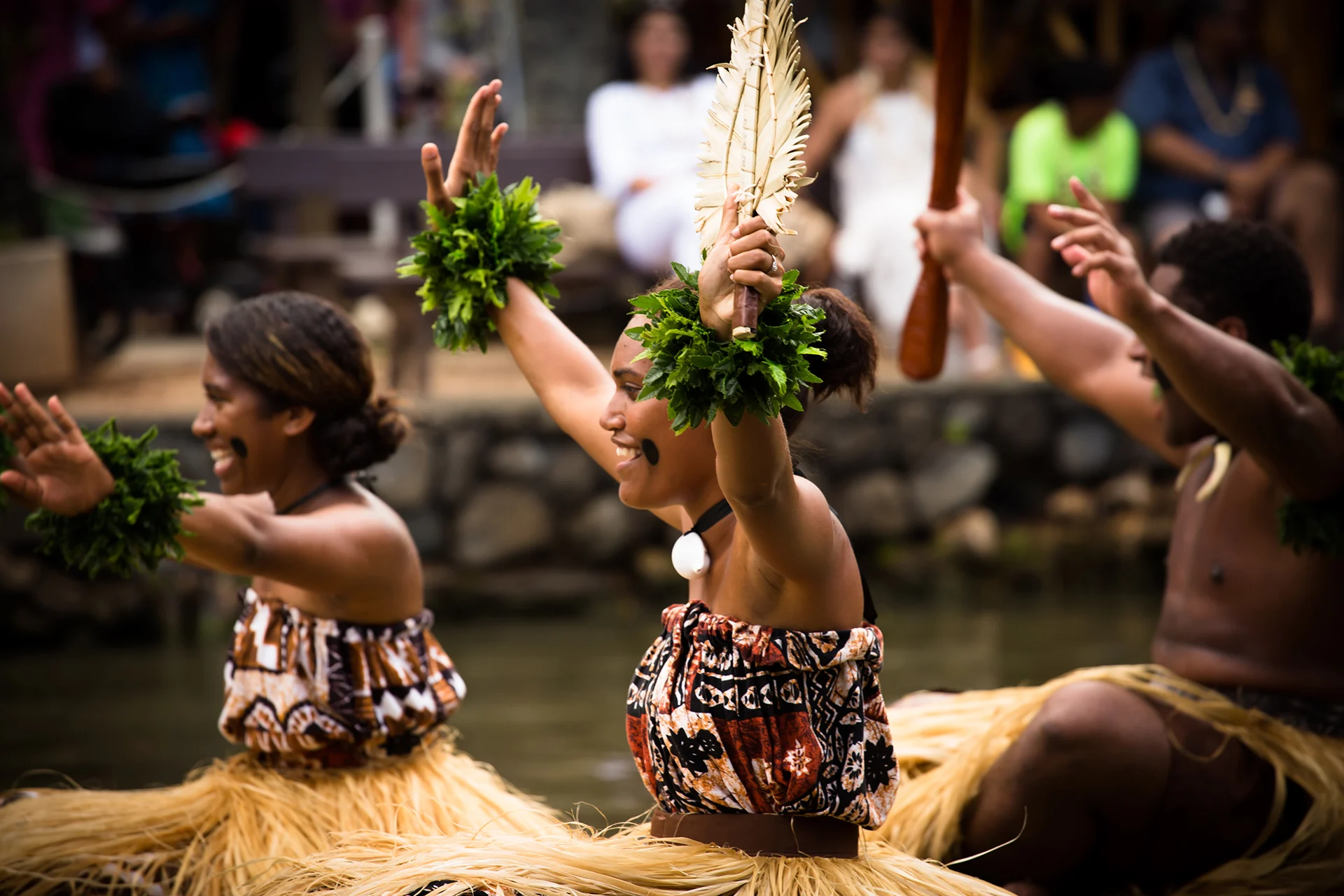
Who are these recommendations for?
- Pacific governments and donor governments.
- International non-government organisations and development banks investing in and delivering programs in the Pacific.
- Industries working in the Pacific.
- Pacific civil society organisations and all actors in feminist and climate justice movements.
How should these recommendations be implemented?
These recommendations for change must reach and benefit girls that are most at risk of climate change and its impacts. This includes girls with intersecting experiences of inequity, injustice and exclusion due to their disability, Indigeneity, race, gender, sexuality, socioeconomic status and/or living in rural and remote regions.
The recommendations for change must also be implemented with girls – they should be at the centre of co-designing, informing and guiding the development of law, policy and programs that are intended for them.
Protecting Pacific girls’ rights in a changing climate.

Pacific girls have access to well-managed, safe and climate resilient essential infrastructure.

Pacific girls have access to quality education, including during and after climate events.

Pacific girls’ rights to health and safety are protected during and after disasters.

Pacific girls are supported, mentored and resourced as agents of change and first responders in climate change adaptation and disaster resilience.

Law and policy

Pacific Governments review, strengthen and enforce laws to protect forests, oceans, rivers, fresh water sources, air and land.

Policy-makers actively engage with Pacific girls to inform their decisions on climate change law and policy.

Policy-makers collaborate across-departments to protect Pacific girls’ rights in a changing climate.

Movement building

Resource and support girls to build girl-led feminist movements for climate justice in the Pacific.

Create inclusive spaces for Pacific girls to collectively co-learn and advocate on climate justice.

Mentor and resource Pacific girls to document their lived experiences of climate change and their climate activism.

Methodology
The Pacific Girls in a Changing Climate report is informed by the principles and practices of feminist participatory action research (FPAR), combining research, gender justice and climate advocacy.
FPAR is a co-designed process facilitated and co-led by communities, involving ongoing cycles of planning, acting, observing and reflecting. Communities collaboratively undertake research and action to generate knowledge about their lives and address systemic injustices.
Over 350 Pacific girls living in six countries including the Federated States of Micronesia (FSM), Fiji, Kiribati, Solomon Islands, Tonga and Tuvalu contributed to different stages of this report between 2021 and 2024. They actively contributed to and lead co-design of the research methodology, art-based storytelling workshops, a regional survey of 319 girls, participatory data analysis and writing, as well as advocacy and campaign planning.
The APWLD website has more information on the FPAR research approach.
This project has been a collaboration between Plan International Australia, Kiribati Climate Action Network, Edith Cowan University’s Centre for People, Place and Planet, and the Australian National University.



